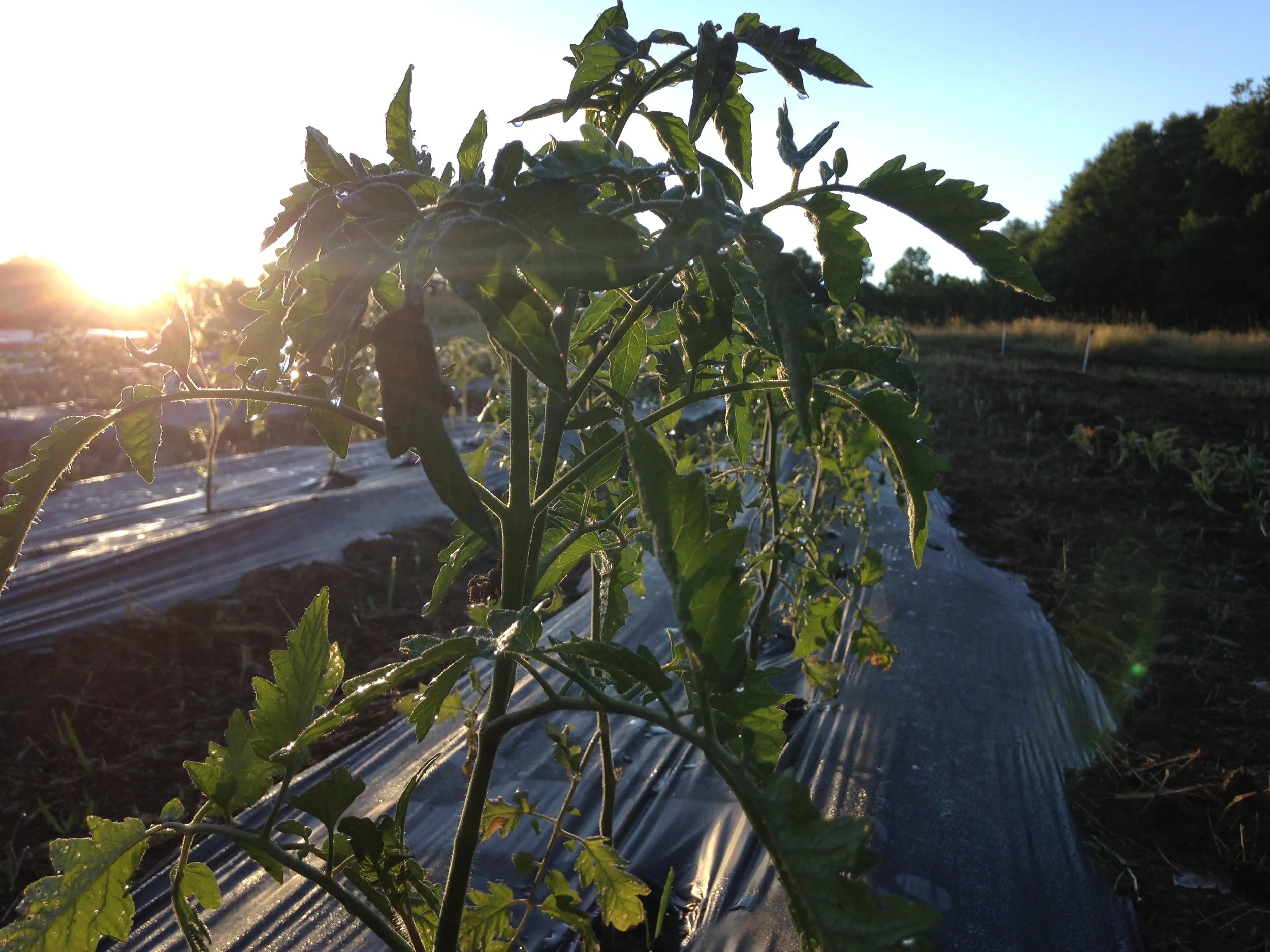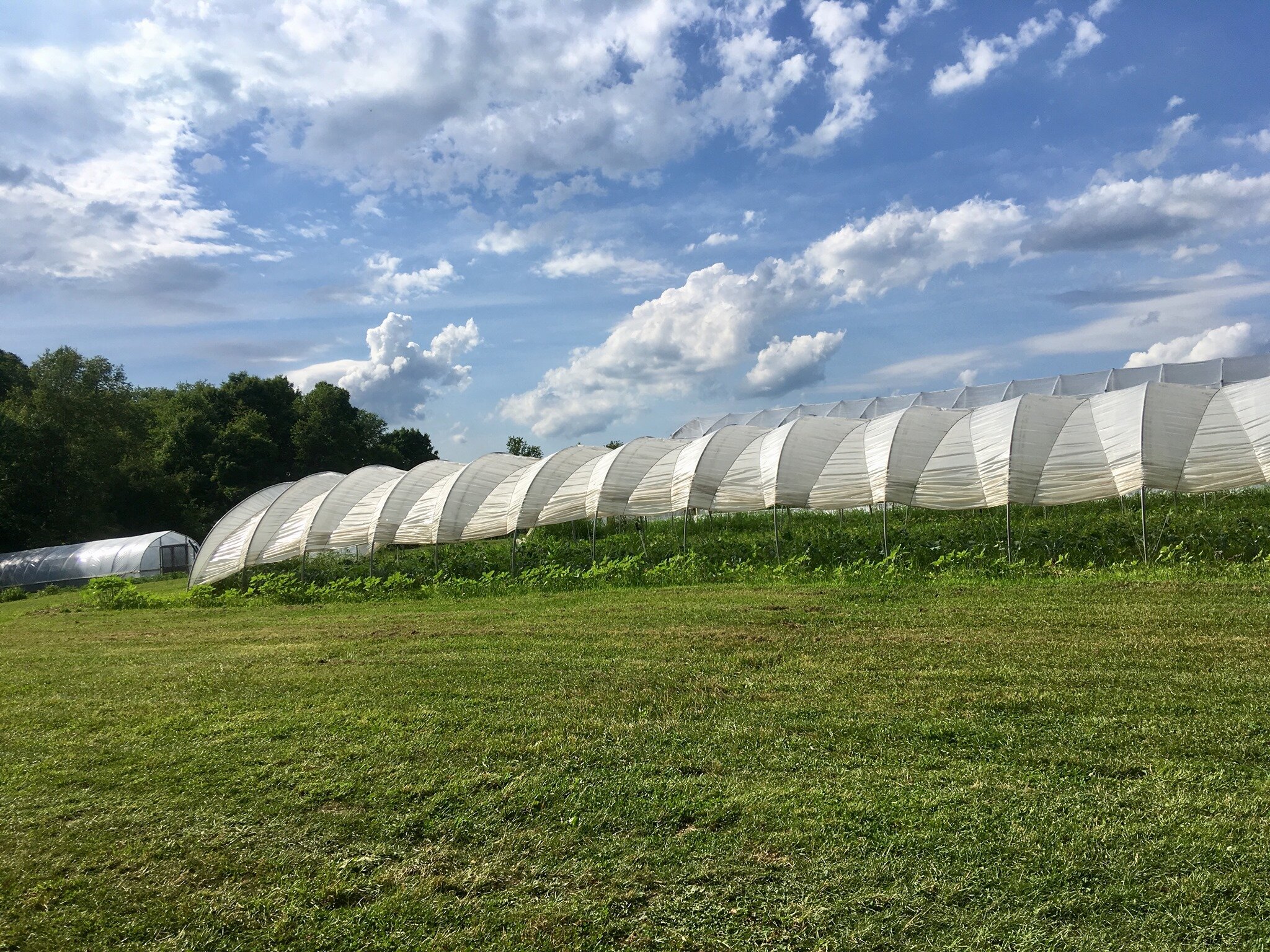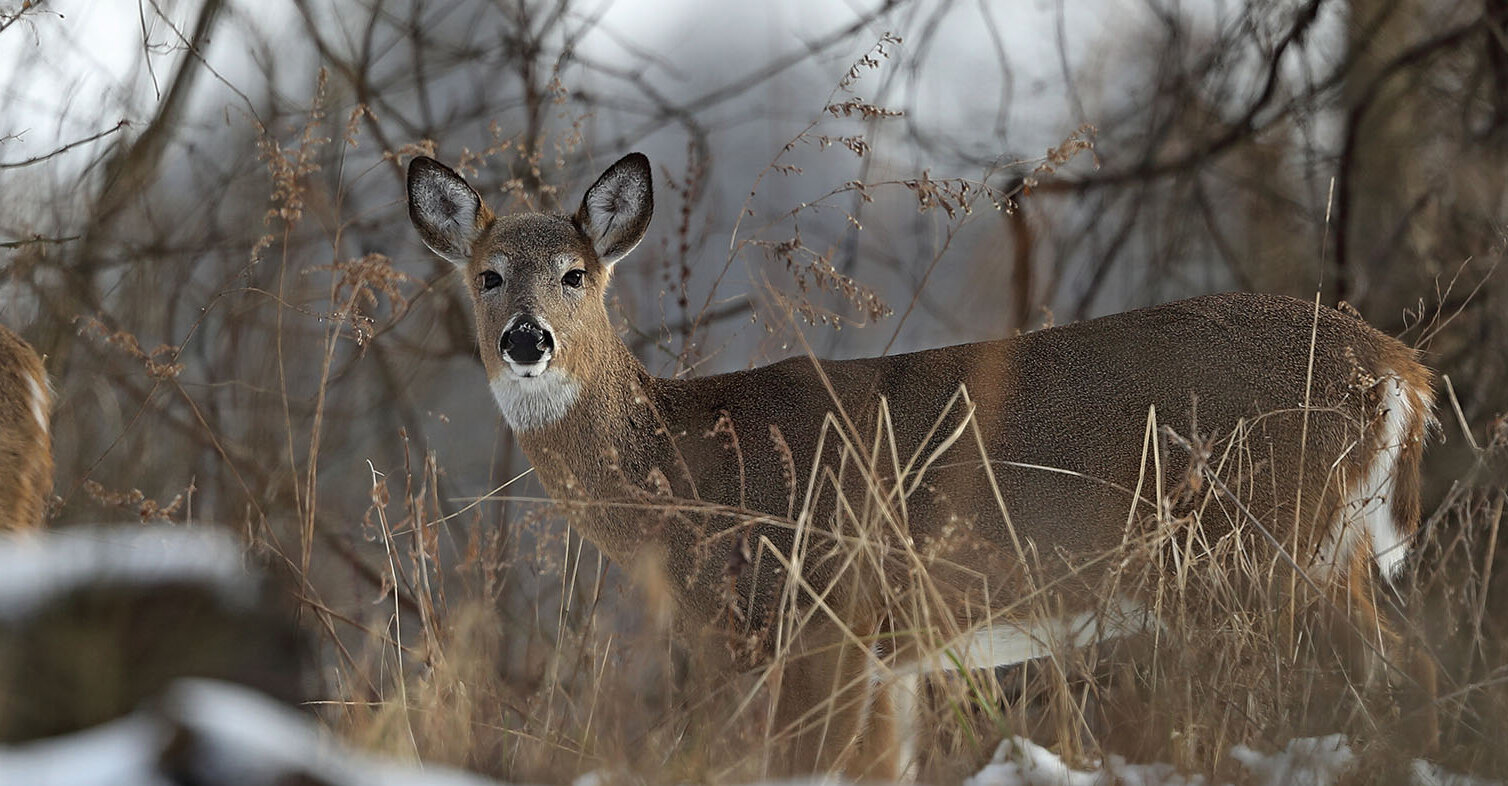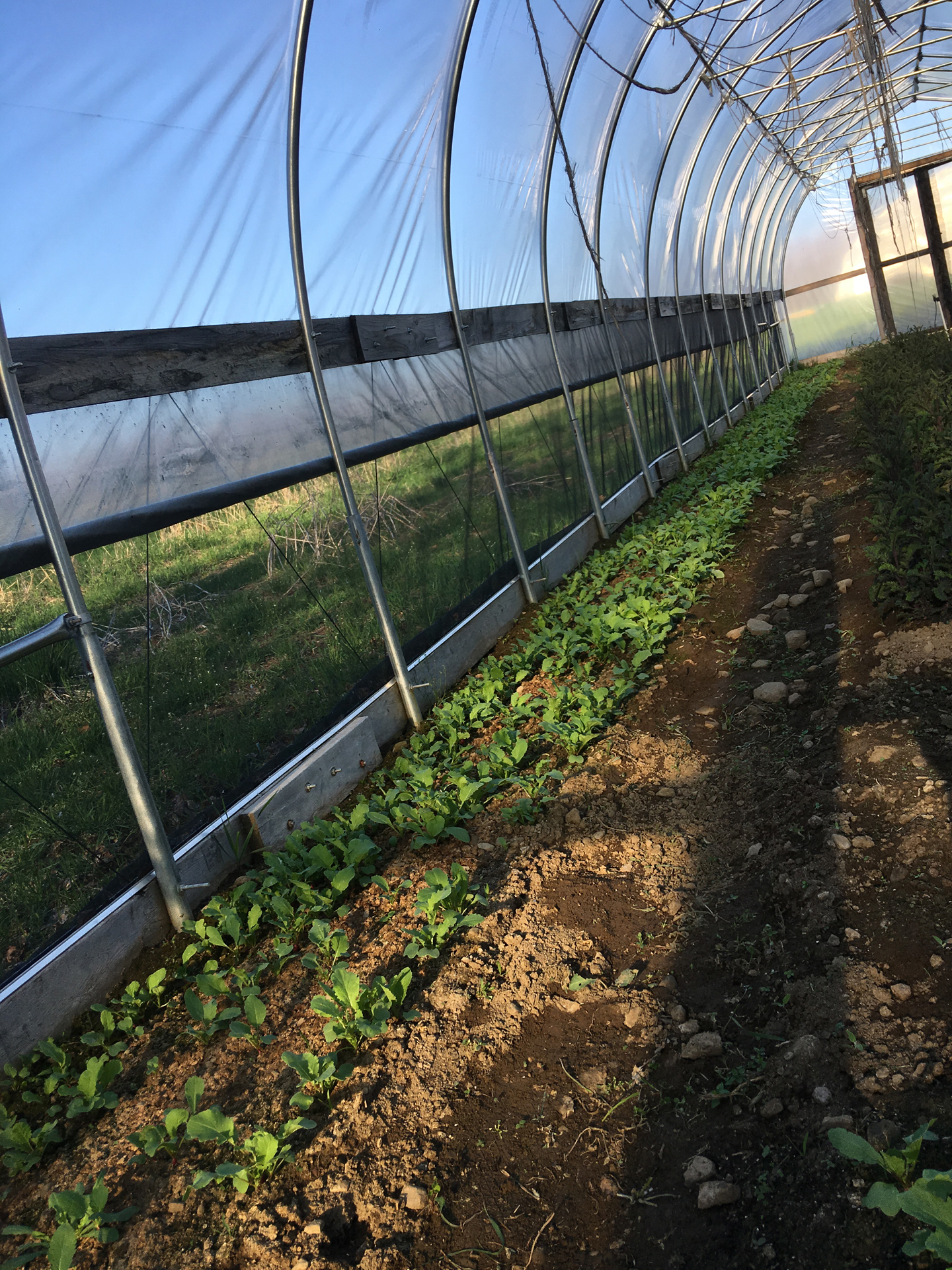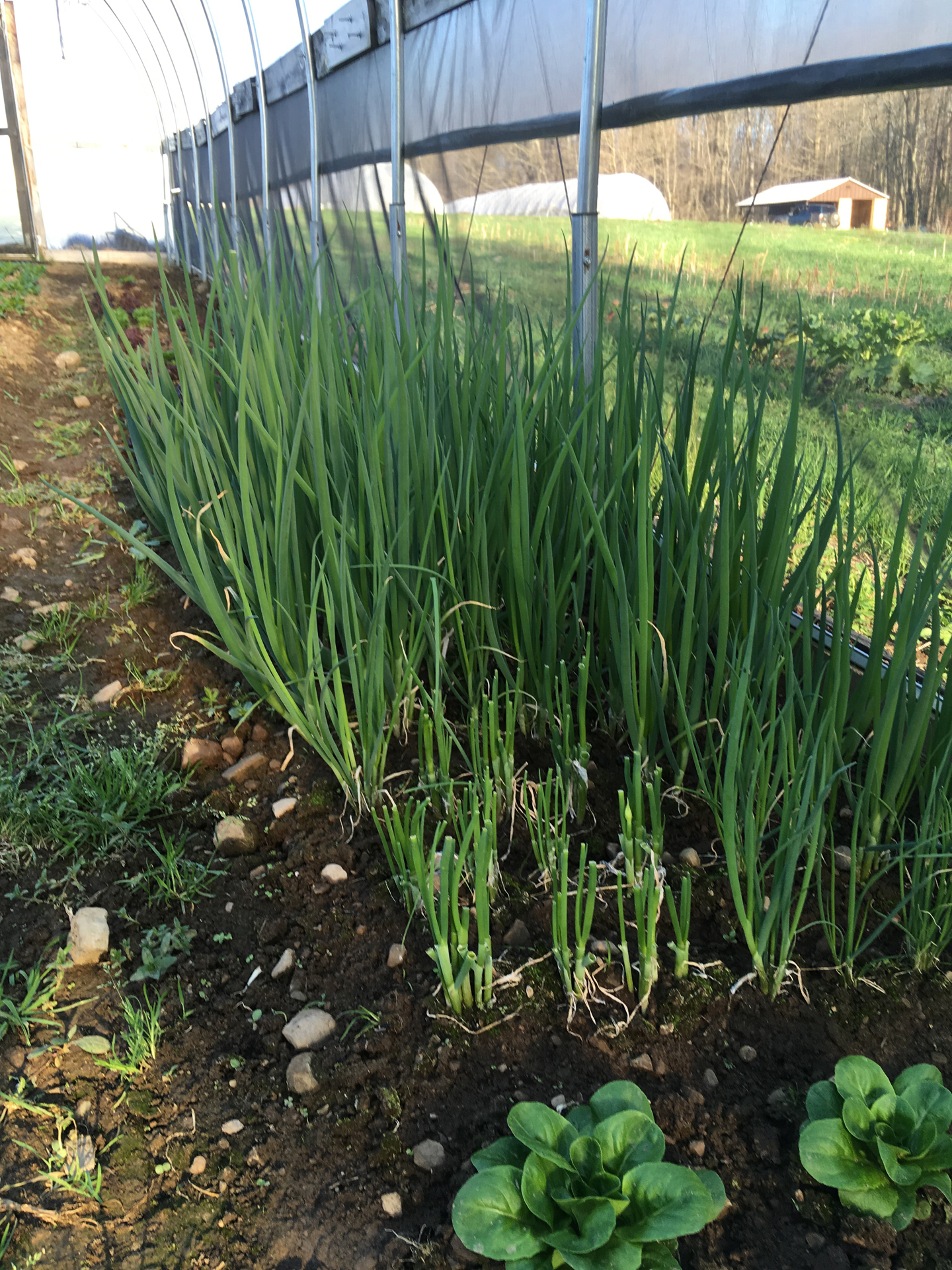There’s a fog shroud snug around the house this morning. It’s hiding much of the forest, and also enveloping the little birds testing their sweet voices.
We’re three days out from spring! We’re expecting a cloud-covered 63 degrees this afternoon, and the extended forecast is rosy. Perfect time to transplant in the Big Tunnel. This afternoon, Silas and I will load up trays of baby lettuces, and test out the new landscape fabric.
Jason is burning holes in the new landscape fabric. The sight of this material, and those neatly-spaced holes makes our hearts pound with excitement! We bid thee farewell, weeds!
After his day job, Jay heads up to the farm to make repairs and prep for the season. He’s been familiarizing himself with the landscape fabric that arrives on our doorstep in big rolls. As the season progresses, this fabric will cover most of the garden beds.
This change is nothing short of revolutionary for the farm. When you’re zero-spray, weeds have the upper hand, and take a physical and mental toll. But not this year. Season 7 will be unlike anything we’ve experienced.
DEER FENCE UPDATE
The fence builder did a walk-through of the farm earlier this month. He says he’ll have the fence done around April 1, which is just in time for when we start planting outside the tunnels.
HERE AT HOME
Jay’s back at it with growing pea shoots, sunflower shoots, and microgreens on a weekly basis. Since early February, he’s also seeded cold-hardy crops for the season, like Asian greens and kale.
Jason’s back to seeding shoots and microgreens every week. We sell these from our website, and also to local shops. Currently, you can find our shoots and micros at Core Goods, 219 Seneca St., Oil City.
This winter, he and Silas took on a new endeavor: maple syrup. They tapped six trees and collect about a 5-gallon bucket of sap every evening. We started boiling it down last weekend, using an outdoor setup with a propane tank. It takes around 40 gallons of sap to produce 1 gallon of syrup.
When he’s not peering into his sap buckets, Silas is zipping from one part of the yard and woods to another, building Legos, and completing kindergarten lessons. It’s been a privilege to be a passenger on his journey toward reading. Over the winter, Jay and Silas became hooked on the adventures of Harry Potter. They’ll have much to discuss with Silas’s aunt and uncle when we’re finally able to all get together.
We’re also enjoying the Gary Paulsen books. We actually haven’t read Hatchet, yet, but we’ve read several of the other books in the Brian’s Saga series. These are right up Silas’s alley, and I’m enjoying them, too.
~ Stella
